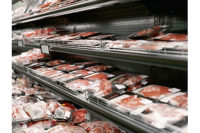ADM has released its second annual list of global consumer trends.
Based on in-depth research from ADM’s proprietary Outside Voice consumer insights platform, ADM provides a breakdown of each growth space poised for takeoff in the new year. These insights are used by the world’s leading consumer brands to fuel product innovation.
Brad Schwan, vice president of category marketing for ADM, explains, “Consumers today continue to navigate a tumultuous environment that has uprooted every aspect of their lives. This has led forward-thinking brands to develop new solutions purpose-built to help consumers establish a sense of normality for themselves, their families, and their pets. We’re seeing everything from foods, feeds, and beverages that promote gut health to plant-based meat and dairy alternatives to biodegradable packaging.”
Below are the eight key consumer trends fueling current and future global growth that point the way for ADM’s innovation, renovation, and development platforms.
1. Nourishment for the Whole Self
Consumers want to be more proactive about supporting their mind and body through a balanced approach to diet and lifestyle. While this is a long-term trend, the recent global pandemic has placed renewed interest on mental well-being, with many looking for more effective ways to cope with stress and anxiety. Wholesome nutrition is one important way consumers are looking to support their holistic well-being. In fact, ADM Outside Voice finds that 37 percent of global consumers expect the snacks they eat to improve their mental well-being.
2. Plant-based Lifestyles
A flexitarian approach to eating has become mainstream as consumers look to functional, wholesome, plant-based nutrition to support healthy, environmentally friendlier lifestyles. In fact, it is expected that alternative proteins will very likely account for 11 percent of the total protein market in 2035. This is being fueled, in part, by COVID-19, which has accelerated interest in plant-based, as a health-forward alternative for consumers who are paying close attention to their body’s nutritional needs. Food and beverage brands, in response, are broadening the landscape of nutrient-dense plant-based options for consumers, aiming to meet their growing demand for products that are sustainable, health and wellness oriented and safe.
3. Microbiome as The Root Of Wellness
Awareness of the microbiome as central to wellness has grown over time. Data from ADM Outside Voice indicates that 58 percent of global consumers are aware of the potential benefits that bacteria in the digestive system can have on their overall health. Today’s consumers are looking for foods, beverages, and supplements that support gut health and overall well-being. Linked by consumers to immune function, aspects of metabolic health and even mood, mental acuity, and feeling energized, consumers’ approach to supporting a healthy gut is evolving from reactive (seeking foods to alleviate discomfort) to proactive (tailored and customized pre-, pro- and postbiotic solutions), as they strive to achieve greater empowerment over their personal health and well-being.
4. Clean & Transparent Sourcing
Consumer demand for "clean-label" products, which they consider to consist of real, kitchen-level ingredients, has become table stakes. Today’s shopper is consistently searching for foods and beverages containing real, simple ingredients that can help promote a healthy, sustainable lifestyle. This has led to a desire for transparency across the entire product lifecycle, from how it’s made to how it’s packaged, and beyond. This is especially true during COVID-19, with consumers placing an increased emphasis on learning where their food comes from and trying to ensure the health and safety of themselves, their families, their pets and their communities. As consumers become more sophisticated in their understanding of the products they consume, 58 percent of global consumers say they will be more attentive to locality claims as a result of COVID-19.
5. Humanization Of Pets
Pets are more commonly seen as part of the family—a trend that has been present over time but accelerated in strength during the pandemic. This extends to what their pets eat, with many pet parents transposing their purchasing values and preferences onto their furry companions. There’s been a 41 percent increase in “all natural” pet foods launched globally. Likewise, ADM Outside Voice also found that 30 percent of global pet owners spent a significant amount of time researching the best food options in the last year. As consumers are challenged with changing lifestyles and a return to work, they will continue to monitor their pets’ overall well-being to ensure they’re providing foods and supplements aimed at helping them care for their minds and bodies.
6. Precise & Responsible Animal Feeding
The interconnectedness of the animal product supply chain is top of mind for today’s consumer. There is an increased demand for optimized feed solutions that support human and animal nutrition in an efficient, environmentally friendly manner for a range of animal species. This is driving brands to begin providing digital documentation explaining how the animal was raised, particularly related to its consumption of antibiotics and/or growth hormones. Nearly half (49 percent) of consumers are willing to pay a premium for products with high quality assurances and verifiable safety standards.
7. Sustainable Goodness
Consumers see sustainability as a moral imperative as they connect it to what is right and ethical, their community and the environment. In fact, 47 percent of global consumers say they are now more attentive to sustainability claims. This has sparked demand for ethical production and sustainable sourcing practices—such as regenerative agriculture and carbon negative production to protect the food supply of the future. Brands are responding by taking positions on environmental matters, aiming to reflect their commitments to increasing the sustainability of their production and distribution systems.
8. Advanced Renewables & BioSolutions
Today’s consumers are more conscious of the environmental impact of their consumption and the food system at large, with a specific focus on the use of finite materials and physical waste. With 38 percent of global consumers being willing to pay more for products made with sustainable materials, conscientious consumers are paying close attention to seeking out food, personal care, and home care products that support the needs of their families, the environment and their local communities. And, consumers increasingly believe that companies should take greater responsibility for reducing waste and energy use from development to disposal.
Each of these growth trend spaces represents an opportunity for forward-thinking brands eager to maintain relevance with today’s consumer.
To learn more about ADM, please visit www.adm.com.






